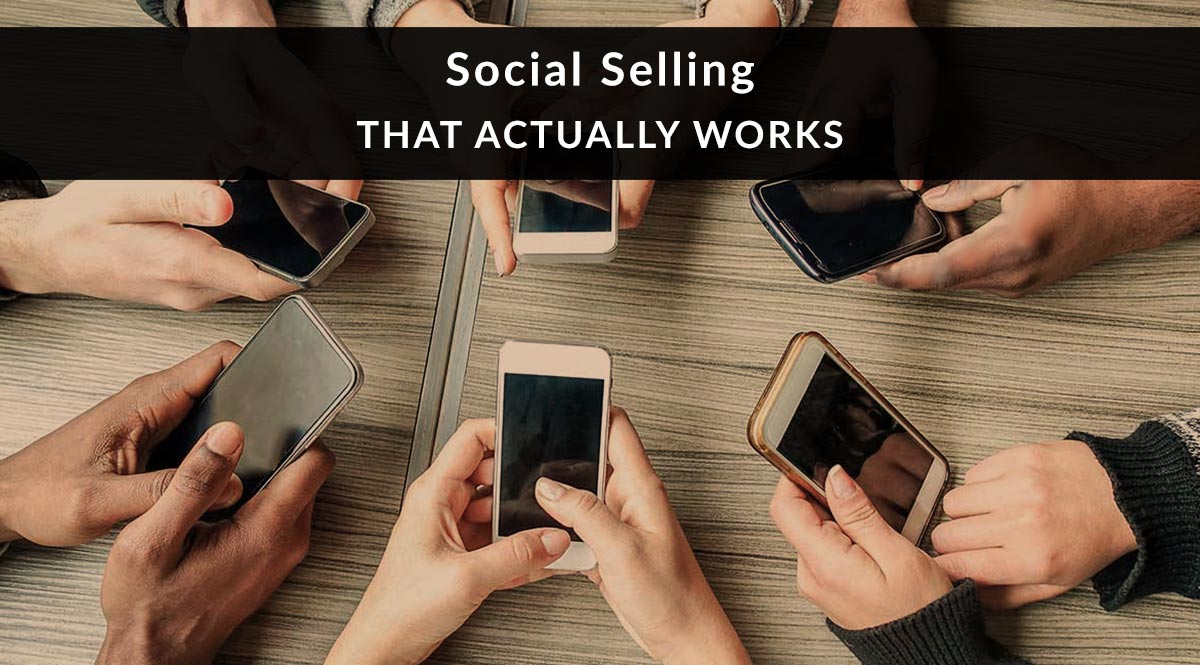
For many of us, social selling is still equivalent to a cold call. We reach out to people who don’t know us and then ask them to buy from us. It shouldn’t be that way in 2018, but it’s easy to see why it still happens.
The digital landscape is more crowded than ever. There are more voices, real and automated, on every social platform. There are more forms of media, especially now that video marketing and podcasting have blown up. It’s easy to get intimidated. That’s why people revert to what they know – a sales pitch, often foisted on a contact who doesn’t even know them yet. These days, that’s just a fast-track to a block or a delete.
The good news? It doesn’t have to be that way. Here are 3 tips for social selling that actually works. If you're wondering what the catch is, it's that these tips don't involve selling at all. It's counter-intuitive, but it can pay off big-time in the long run.
1. Connect to serve
If you’ve ever struck out via email or LinkedIn messaging, it might have been because you asked the wrong question. If you asked, “How can I help you?”, that was probably the wrong question. It sounds like you’re doing the right thing, but according to Jon Ferrara of Nimble.com on the Social Selling Podcast, this messaging is still too focused on you.
The bottom line? Don’t make your interest sound like it’s predicated on your ability to sell them something later. Instead, ask a simple open-ended question: “What are you working on? Tell me more about it.”
At this point, your only goal should be to listen and provide value. Can you share articles or case studies that address your new contact's needs? Can you connect her with someone who has expertise in a field she needs? According to Ferrara, the "new sales" consists of not asking for anything at all. It’s about being a trusted advisor people turn to when they need help.
2. Connect with and reward your brand advocates
If someone takes the time to sing your praises online, it’s worth the follow-up to say thank-you. Not in the hopes of selling to them, but in the hope that you can build a relationship. As Anne Ackroyd said on SocialMediaExaminer.com, in these days of shifting social media algorithms, “relationships are the new reach.”
For example, if someone replies to your tweet, retweet it. If they’re someone you want to turn into an advocate, retweet with a comment thanking them, or adding to what they said. A little appreciation goes a long way on social media.
You can encourage more engagement by creating perks for your biggest fans or most frequent commenters.
- LinkedIn and Facebook: Create a private group for vetted fans/connections to ask questions about insurance and finance.
- Pinterest: Create a private board with pins that link to killer articles and resources. Some of them can even be yours! Send a link to this board to people who frequently comment on your pins.
- Any network: Send a private message to someone who takes the time to participate in a social campaign you run, or who goes the extra mile to share your content or recommend you.
3. Connect at a conference
The reason this works? You have a genuine shared interest with your fellow attendees. It’s not overstepping your bounds to reach out before, during, or after a conference and try to build a connection. There are several ways to do this.
- Before the conference. Use the conference’s speaker and attendee lists, if provided. Use social media to gather information on the people you’d like to meet, or use free Chrome Extensions like Evercontact or Hunter to do it for you. Reach out via email or social and ask if they’d like to meet up during the event to talk about them or their area of expertise.
- At the conference. Want to meet a speaker or attendee? Use social media to find talking points you may have in common. Approach them in person or online, if they’re actively posting. If you can’t connect in person, reach out after the conference to ask for their notes or thoughts.
- After the conference. Find speakers and attendees using the conference’s hashtag, published speaker and attendee lists, or Twitter lists created by the organizers or attendees. Reach out with questions, thank-you notes, or requests for more information.
As you’re getting to know your new connection, use the strategies described above. In other words, make it all about them. Learn more about them, and send helpful tips, ideas, or connections that can help them learn more, do business better, or be more efficient.
The end goal is to show them what a helpful resource you are. Then, when they have a problem that’s in your area of expertise, they'll naturally think of you…and you never have to put a damper on your relationship with a cold call or cold email.
That’s our look at social selling that actually works!
The secret to social selling? By now, you've probably realized that it's networking. There shouldn't be any selling involved, at least until you have a very strong relationship with your contact. What are your best tips for connecting and nurturing contacts on social media?
